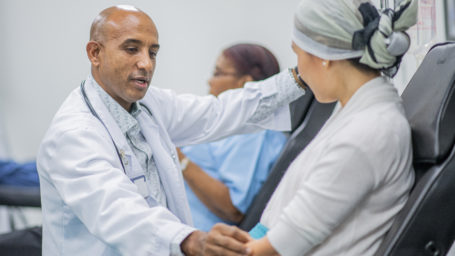Digestive surgery is one of the digestive surgeries in the clean contaminated category so that it has a fairly high risk of infection and has a 4.46 times risk of experiencing SSI (surgical site infection) compared to other types of surgical procedures. In general, oncology surgery by cutting the skin is generally in the category of clean surgery. In surgery, it is necessary to give prophylactic antibiotics given before surgery to prevent infection in the operating area. At RSU Dr.H.Slamet Martodirdjo Pamekasan, in cases of digestive surgery and oncology prophylactic antibiotics are used, but so far there has been no evaluation of the rationale and effect of the incidence of SSI. The rationale for the use of prophylactic antibiotics will be evaluated qualitatively by the Gyssen method, which is the standard method of analyzing antibiotic use and observing the presence of postoperative SSI in patients undergoing digestive surgery and oncology.
This study is an analytic and descriptive observation study, the data were taken prospectively to analyze the use of prophylactic antibiotics in patients with digestive surgery and oncology and to analyze the risk factors for infection in the operating area at Dr.H.Slamet Martodirdjo Hospital, Pamekasan Regency. This research was conducted in March-April 2020 due to the Covid-19 pandemic, starting from April-June 2020 until the sample was fulfilled (number of patients in the sample = 67 patients), consisting of 48 digestive surgery patients and 19 oncology surgery patients.
Based on the analysis of infection risk factors with the incidence of SSI, which stated that 64,2 % of the prophylactic antibiotics cefazolin did not develop SSI, while ceftriaxone, although only one patient had a SSI incidence, was 1.5%. Digestive surgery prophylaxis antibiotics requested by WHO are cephalosporin antibiotics of generation I and made II as prophylaxis to prevent pathogens from choosing antibiotics, you must pay attention to the pattern of germs and antibacterial sensitivity in hospitals.
In the study period, the pattern of germs and antibacterial sensitivity in hospitals was not yet available. The choice of prophylactic antibiotics is also based on the type of surgery and the nature of the drug. Therefore, prophylactic antibiotics should be non-toxic and, bactericidal, which is available in the active form, reach therapeutic levels in tissues in a short time, owing to the fear of multiresistance, superinfection, and infection with Staphylococcus and spp. Prophylactic antibiotics used in digestive surgery and oncology at RSU Dr. H. Slamet Martordirdjo Pamekasan is an antibiotic, namely cefazoline, cefuroxime, ceftriaxone which is a class of I, II and -III cephalosporins and there is also injection of metronidazole and ciprofloxacin.
The results of this study found that the surgical site infection rate (IDO) was found in only 1 patient (1.49%) and the most widely used prophylactic antibiotic was cefazoline 64.2% with a dose of 2 grams. The results of qualitative analysis using the Gyssen method in digestive surgery patients 41.7% and oncology surgery 57.9%, there was no significant difference in the use of prophylactic antibiotics in categories 0-I and II-IV. Analysis of risk factors for infection in the operating area, such as comorbid diseases, did not affect SSI after surgery.
Penulis: Lisa Narulita, Suharjono, Kuntaman, dan Mohammad Akram
Link Jurnal: https://www.degruyter.com/document/doi/10.1515/jbcpp-2020-0453/html
Journal of Basic and Clinical Physiology and Pharmacology
SCOPUS Q3





